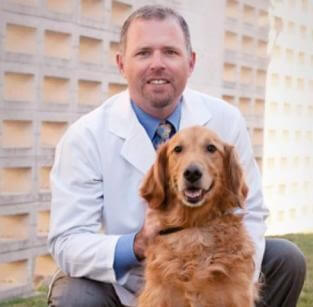by: Stephen Kerpsack, DVM, DACVS

Veterinarians often ask me for tips on what they can do during a surgical procedure in an effort to improve the final outcome for the patient. I have come to realize that this is often not the component of care that leads to a suboptimal outcome in a patient going to surgery. Preoperative evaluation, preoperative care, and postoperative evaluation through the entire convalescent period are often more important than the actual surgery.
While I do perform surgeries that require specialized skills, many of the procedures that I and the other surgeons at CTVSEH perform can be performed by a veterinarian with basic surgical skills. Deciding if you can perform a surgery on a patient requires more than reading about/viewing pictures/viewing a video of the procedure. You should have a reasonable understanding of how to choose a good surgical candidate. Patients require a thorough physical and diagnostic evaluation to determine if other comorbidities are present that may require different care during anesthesia or alter the postoperative course of the patient. Examples include a severely dehydrated pyometra or gastrointestinal foreign body. While it is important to get the patient to surgery in a timely manner, the treating doctor must be sure that the patient is adequately hydrated and does not have significant electrolyte abnormalities that can lead to anesthesia complications/organ failure post anesthesia. Another example is identifying a patient that has a polyarthritis as the cause of their cruciate ligament tear. These patients do not do well with surgery if the polyarthritis is not controlled and the polyarthritis may worsen if not adequately treated prior to surgery. When patients do not have appropriate preoperative care, they are at risk for postoperative complications that cannot be overcome with any degree of surgical skill.
Appropriate care of the patient beyond the last suture is imperative to achieving success. One must have a working knowledge of how a patient should look and act during the recovery period. Does the incision look appropriate? Is the patient's level of discomfort expected for the procedure performed and the time since surgery? Is it expected that the dog or cat does not want to eat the day after the procedure? Should I be worried that the dog does not want to get up? Is the drain output more, less, or expected? If the attending veterinarian does not know what to expect post surgery, they will be unable to identify problems or will worry about problems that do not exist.
If you do enough surgery, you will experience complications. If you appropriately choose surgical patients, appropriately prepare them for surgery, and know what to expect in the postoperative period, complications can be minimized or treated before they become significant.
In the past, surgeons were trained in and performed preoperative and postoperative care in addition to the surgical procedures. The current trend in veterinary surgery residencies is to focus on teaching procedures. In some cases, the first time a surgeon meets their patient is in the operating room and they do not see the patient again after surgery. As this trend continues, the surgeon has less of a role in the overall success of a surgery. The role of pre and postoperative care must now be taken over by other veterinarians on the patients team and these veterinarians must have an understanding of how to perform these roles if we wish to improve our surgical outcomes.

